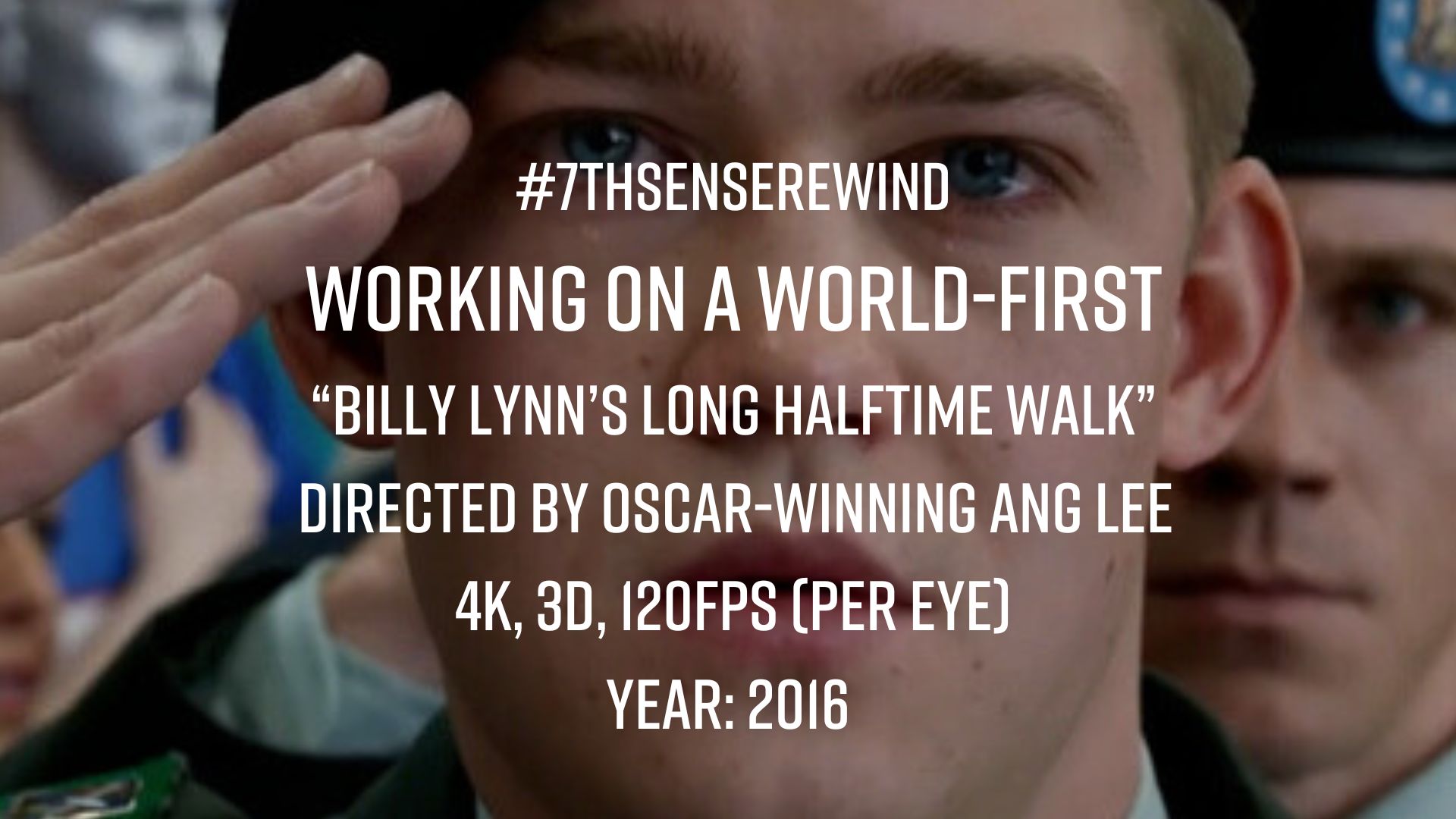
Back in 2016, Oscar-winning director Ang Lee pushed the envelope by using an unprecedent 4K, 3D, 120fps (per eye) format for his new film "Billy Lynn's Long Halftime Walk”. This was beyond anything ever attempted before. The team chose 7thSense as part of the highly specialised setup to make it all happen.
At NAB Show and IBC that year – the 11-minute clip received huge applause when it screened for the very first time.
Ang had employed extreme cinematic techniques to tell the story of a soldier who returns to the USA psychologically and emotionally damaged by his time in Iraq.
Audiences who watched the film in its native format found the result startling and uncompromising. Lacking the reassuring, artistic distance that 24fps film typically created, viewers weren’t looking through a window into the world of the story – they were pushed into the action, bullet casings flying past their faces.
This was Ang Lee’s vision, but to make it work Sony Pictures hired Ben Gervais for experimental technical and creative support. Ben had worked as a camera assistant, broadcast engineer and post-production technician, experience that led to his career as a workflow consultant. On ‘Billy Lynn’ he is credited as Technical Supervisor and worked alongside the production team at the studio.
Speaking to Digital Media World at the time, he said, “We decided to shoot at 120 because that would give us the flexibility to output the range of standard formats that would be shown in theatres – we could generate 60fps because it’s exactly half the frame rate, and 24fps because it’s one fifth the original number of frames,” he said.
Ang was also concerned that the story’s high-paced action war scenes would suffer motion stutter, causing headaches and eyestrain for viewers. Likewise, his approach was to increase the frame rate.
“Furthermore, Ang likes to push the limits of conventional cinema, and wondered how the film at 120fps would actually look on screen. No one had ever seen footage like this before,” Ben said. “Using Christie Digital Mirage projectors, and media servers from 7thSense, we tried it – when the lights came up after we saw it the first time, we all just sat there, stunned. We knew we had to show this to audiences because it’s remarkably different to what people are used to seeing.”
Consequently, they planned to not only shoot in native stereo at 120fps, but to make that frame rate a key deliverable for the small number of theatres would be set up to show it. In turn, this meant they had to find a practical pipeline and workflow for post-production.
The creative vision was one thing - realising it technically was another. 120fps with 3D in HDR, on two Sony F65 cameras, produced five times the amount of data of a standard film. Adding stereo 4K increased it to 10 times more data than conventional productions.
Read more at https://shorturl.at/YLeAT